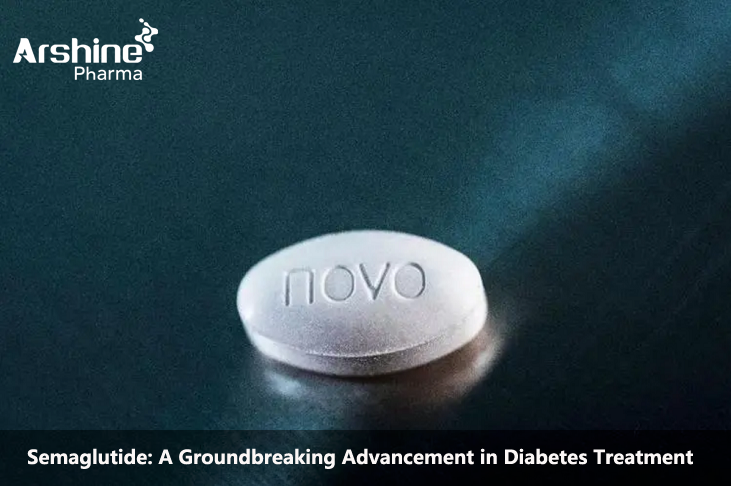Introduction
In the pharmaceutical industry, Semaglutide has emerged as a groundbreaking medication for the management of type 2 diabetes mellitus. As a glucagon-like peptide-1 (GLP-1) receptor agonist, Semaglutide offers a novel therapeutic approach to achieving glycemic control and reducing cardiovascular risk in patients with diabetes. This comprehensive analysis explores the characteristics, mechanism of action, pharmacological profile, clinical applications, safety, and future prospects of Semaglutide, highlighting its significance in revolutionizing diabetes care and improving patient outcomes.
1. Characteristics of Semaglutide
Semaglutide, marketed under the brand name Ozempic, is a long-acting GLP-1 receptor agonist. It is a synthetic analogue of human GLP-1, designed to mimic the actions of the naturally occurring hormone. Semaglutide has an extended duration of action, allowing for once-weekly dosing, which contributes to improved patient compliance and convenience.
2. Mechanism of Action
Semaglutide's therapeutic effect is based on its ability to activate the GLP-1 receptor. GLP-1 is an incretin hormone secreted by the intestine in response to nutrient ingestion. It stimulates insulin secretion from pancreatic beta cells in a glucose-dependent manner, which helps regulate blood glucose levels. GLP-1 also inhibits glucagon release from pancreatic alpha cells, reducing hepatic glucose output, and slows gastric emptying, promoting a feeling of fullness and reducing postprandial blood glucose spikes.
By activating the GLP-1 receptor, Semaglutide mimics the actions of GLP-1, leading to increased insulin secretion, decreased glucagon release, and slowed gastric emptying. This comprehensive effect contributes to improved glycemic control, reduced body weight, and reduced cardiovascular risk factors in patients with type 2 diabetes.
3. Pharmacological Profile
3.1 Pharmacokinetics
Semaglutide is administered subcutaneously and is slowly absorbed into the bloodstream, leading to a prolonged duration of action. The drug reaches peak plasma concentrations within 2 to 3 days after administration. Due to its extended half-life, Semaglutide can be administered once weekly, making it a convenient option for patients and healthcare providers.
3.2 Pharmacodynamics
Semaglutide's pharmacodynamics are closely tied to its mechanism of action as a GLP-1 receptor agonist. By activating the GLP-1 receptor, Semaglutide promotes glucose-dependent insulin secretion, inhibits glucagon release, and slows gastric emptying. This results in improved glycemic control, reduced HbA1c levels, and decreased postprandial blood glucose excursions.
Additionally, Semaglutide has been associated with significant reductions in body weight, making it a valuable option for patients with type 2 diabetes who struggle with obesity.
4. Clinical Applications
4.1 Monotherapy
Semaglutide is approved for use as monotherapy in patients with type 2 diabetes who are inadequately controlled by diet and exercise alone. As a stand-alone treatment, Semaglutide offers a potent option to improve blood glucose control and initiate early intervention in the management of diabetes.
4.2 Combination Therapy
Semaglutide is often prescribed in combination with other antidiabetic agents to achieve better glycemic control. It can be used alongside metformin, sulfonylureas, thiazolidinediones, and basal insulin. Combining Semaglutide with these agents provides a synergistic effect in lowering blood glucose levels and allows for individualized treatment regimens based on patient needs and response.
4.3 Cardiovascular Benefit
Beyond its glycemic control benefits, Semaglutide has demonstrated significant cardiovascular benefits. In clinical trials, Semaglutide has been shown to reduce the risk of major adverse cardiovascular events (MACE) in patients with type 2 diabetes and established cardiovascular disease. These findings have solidified the role of Semaglutide as a valuable antidiabetic agent with additional cardioprotective effects.
4.4 Obesity Management
Semaglutide's ability to promote weight loss has led to its investigation as a potential treatment for obesity. In higher doses, Semaglutide has been studied for weight management and has shown promising results in reducing body weight and improving cardiometabolic parameters in individuals with obesity.
5. Safety
Semaglutide is generally well-tolerated, with most adverse effects being mild to moderate in intensity. Common side effects include nausea, vomiting, and diarrhea, which tend to diminish over time. Importantly, Semaglutide has a low risk of hypoglycemia when used as monotherapy, making it a favorable option for patients prone to hypoglycemic episodes.
However, like other GLP-1 receptor agonists, Semaglutide may be associated with rare but serious adverse effects, such as pancreatitis and thyroid tumors. Therefore, it is essential to carefully assess individual patient risks and benefits before initiating treatment with Semaglutide.
6. Future Prospects
The future prospects of Semaglutide in the pharmaceutical industry hold great promise. Ongoing research aims to explore its potential applications in other metabolic and cardiovascular conditions, as well as its role in combination therapy with emerging antidiabetic agents. Additionally, investigations are underway to better understand Semaglutide's mechanism of action and to optimize its dosing and delivery for improved patient outcomes.
Conclusion
Semaglutide, a long-acting GLP-1 receptor agonist, has revolutionized diabetes care and emerged as a transformative medication in the management of type 2 diabetes mellitus. Its unique characteristics, mechanism of action, and pharmacological profile have positioned it as a versatile and potent option for achieving glycemic control, reducing cardiovascular risk, and promoting weight loss.
With a favorable safety profile and ongoing research, Semaglutide's future in the pharmaceutical landscape looks promising. As the industry continues to innovate, Semaglutide's potential in combination therapy, cardiovascular benefits, and obesity management will likely play a crucial role in advancing diabetes care and improving patient outcomes.
Its impact on patient care and the field of diabetes management reaffirms Semaglutide's essential role in transforming the lives of individuals living with type 2 diabetes and propels the pharmaceutical industry forward in the relentless pursuit of effective and safe therapies for this global epidemic.
